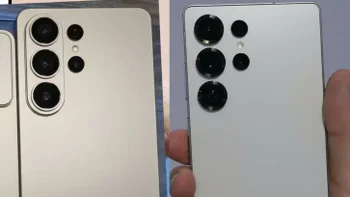Facebook's mobile plans (Part 1): Why Instagram is worth $1 billion

Some may say that Facebook has just paid $1 billion for Instagram to acquire filters for its photos, and there is a surprising amount of truth in that. Some think that this is the end of Instagram as we know it, but there may not be so much truth to that. There is much more behind the acquisition of Instagram than is readily apparent, and ultimately, it could be a move with some huge mobile implications.
As we mentioned in our derision of the bigotry that was uncovered in the aftermath of Instagram being released on Android, we don't think too much of the product itself. Instagram as a product is nothing new or innovative, rather it is a product that taps into a deeper part of people in a successful way. We've seen plenty of apps take advantage of false scarcity to drive demand and create a brand. The iPhone did it with its carrier partnerships. Facebook did it will its slow rollout to college campuses. And, Instagram has done it by starting on iOS and building up a reputation before moving into the Android market.
Like some of you, we aren’t the biggest fans of Instagram. It’s a nice enough app and social network, but it’s far too limited for our tastes. We are power users; so, we like options, we like to tinker, and we like control. But, even for those who like the simplicity of Instagram, there are very similar options like Lightbox or Pixlr-o-matic, which essentially do the same thing. Although, some options like Pixlr-o-matic do offer many more options simply because it can hook into camera alternatives on Android like HDR+ or Camera ZOOM FX and alter those images.
Instagram’s success
Of course, we aren’t the target demographic of Instagram. The app is limited and simplified by design. Each choice has been made to limit potential errors by users. There is no option for portrait or landscape, the frame is just a square. This limits framing issues by keeping the frame smaller. And, of course there is nothing more than a set of filters in order to erase the potential for user errors in color correction, contrast, etc. This simplicity has been the main success of Instagram.
In this way, Instagram has been much like another recent big money winner in the acquisition game, OMGPOP, which was purchased by Zynga for $180 million simply on the popularity of Draw Something. OMGPOP is a developer with nearly 30 web-based multiplayer games, and 3 mobile multiplayer games, but Draw Something was the one that struck a chord not only for its simplicity, but the effect of that simplicity on users. Like Instagram, Draw Something was designed to pull people in by making them feel good.
Most apps or games try to make users feel good by setting up a challenge and allowing the user to succeed, or by making the user feel productive. Draw Something and Instagram are apps that just want to make you feel good about you. Draw Something is nothing original, it is merely Pictionary with an even lower barrier to entry. The simple addition of giving the letters you need rather than a full keyboard makes it slightly easier to guess words that you might never have gotten when playing Pictionary.
Similarly, Instagram wants to make you feel like the best photographer around. So, it has simplified the experience of taking and sharing a photo, while adding a very simple way to make your photos feel more unique. Everyone has pictures of their food and pets online, but now you can give those same pictures a funky new feel because of a pre-set customization. And, that pre-set is a big deal. If users messed up the contrast or hue sliders and lost time tweaking a picture, one might get discouraged. But, instead of that possibility, Instagram just has filters, so if you don’t like how a picture looks, you just choose another filter, and boom, you feel like an awesome photographer. Sure, you may just be posting the same old pics of your pets and your food, but those pictures will have an extra flare, because they look like a faded Polaroid.
Conclusion
Instagram provides more value in how it is used than what it can do, and that's something that Facebook can learn a lot about. Facebook will more often than not frustrate users who are trying to figure out how to complete a task, but there is nothing that can really frustrate someone about using Instagram. Sure, there are plenty of frustrations to be had for those who have to see a constant stream of Instagram photos flooding their various social networks, but that's certainly not a problem that Facebook cares too much about. Of course, Instagram is also a purely mobile app, which is also something that Facebook needs to push forward very soon. And, that's the topic of our next piece, about Facebook's plans (and its plans for Instagram) as it moves into the mobile space.














Things that are NOT allowed:
To help keep our community safe and free from spam, we apply temporary limits to newly created accounts: